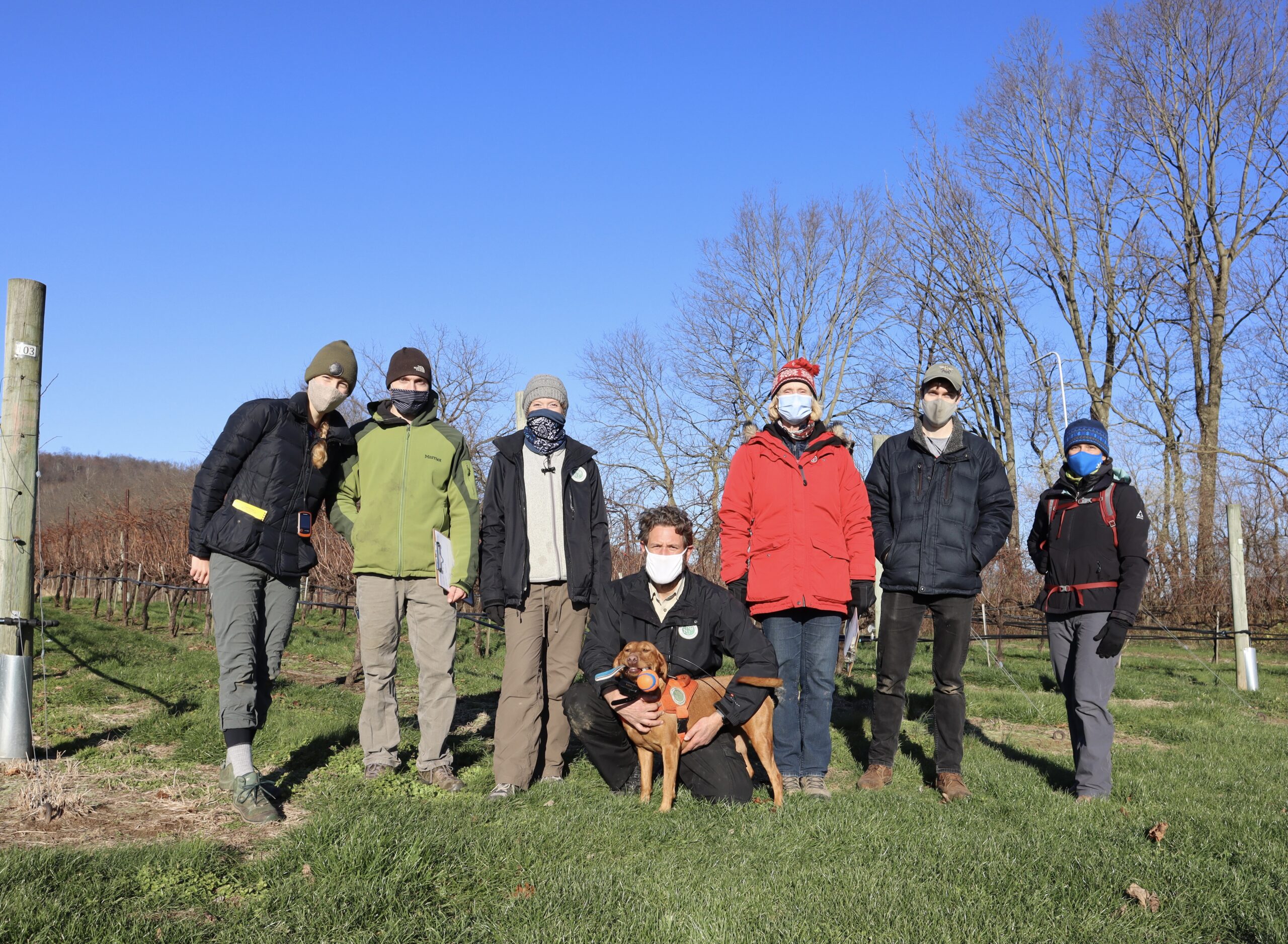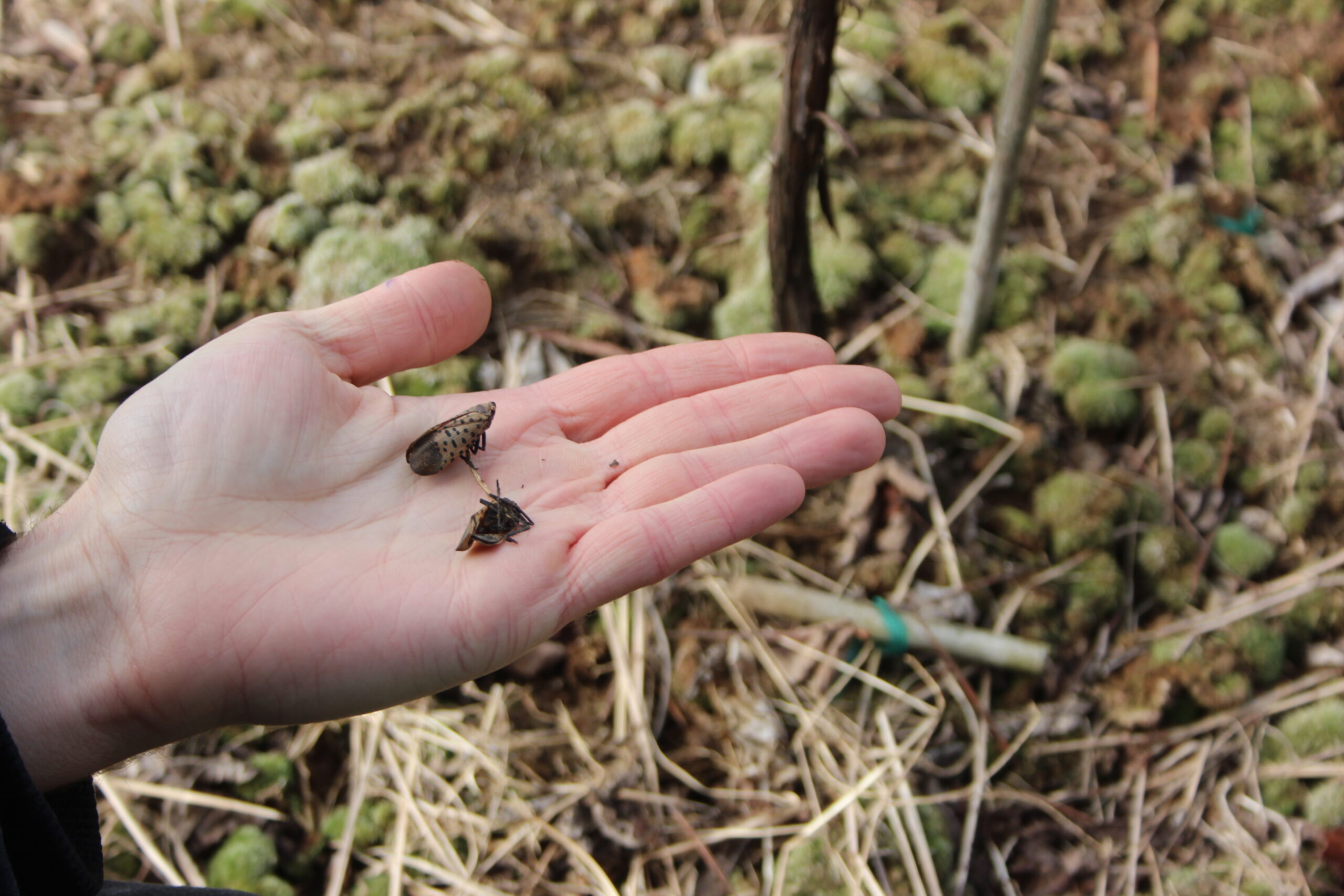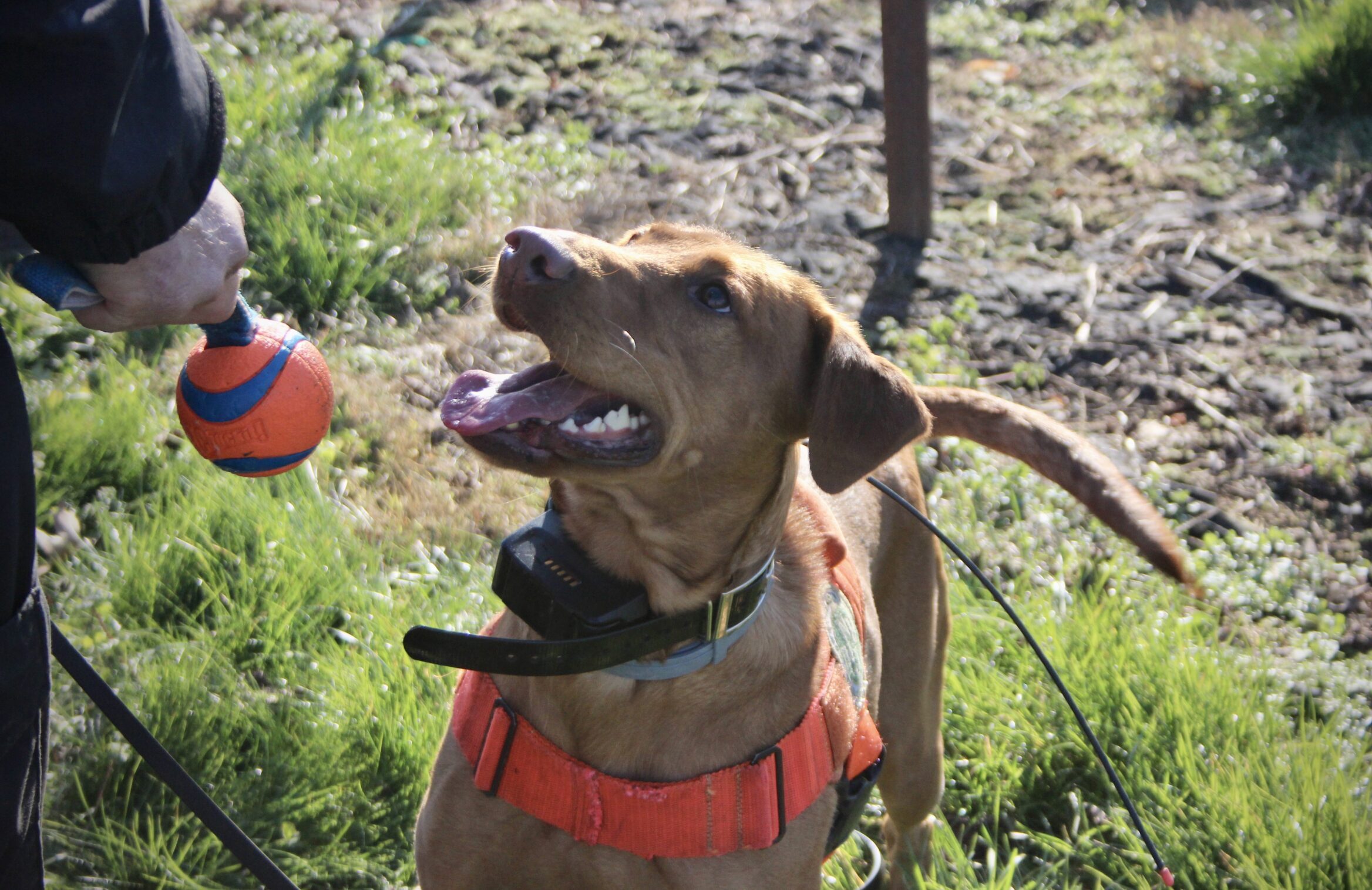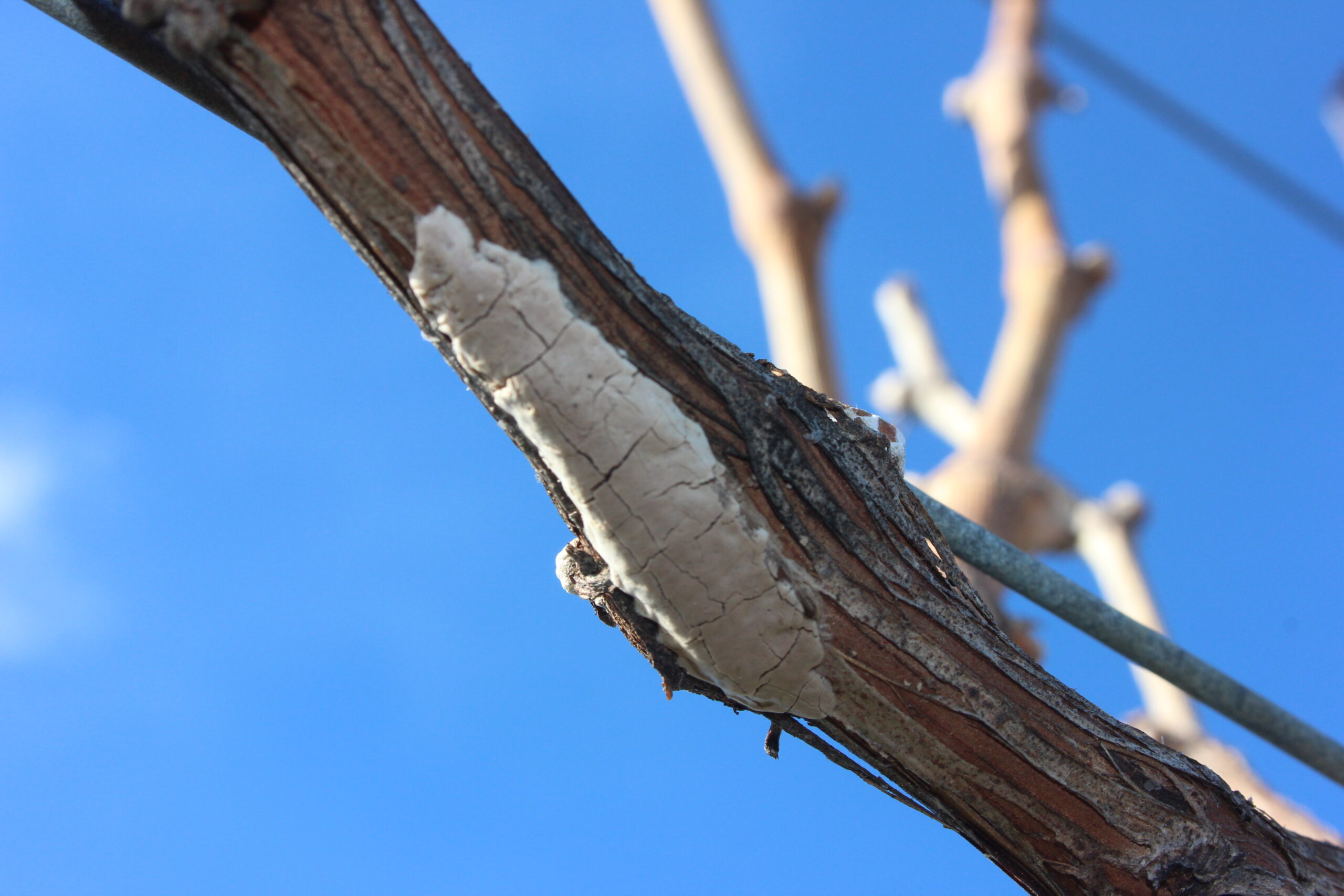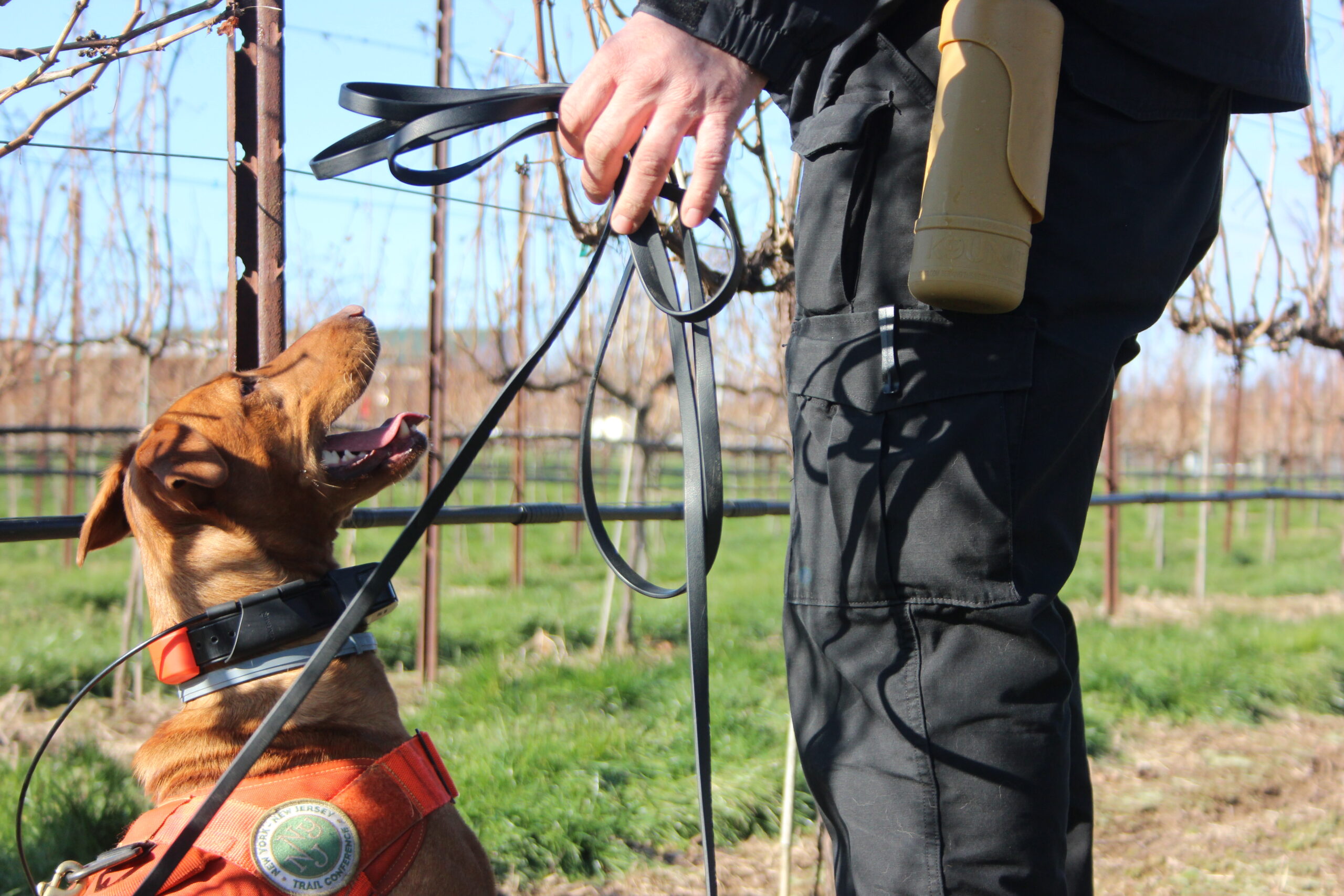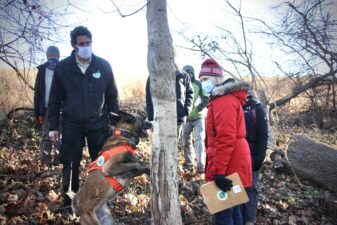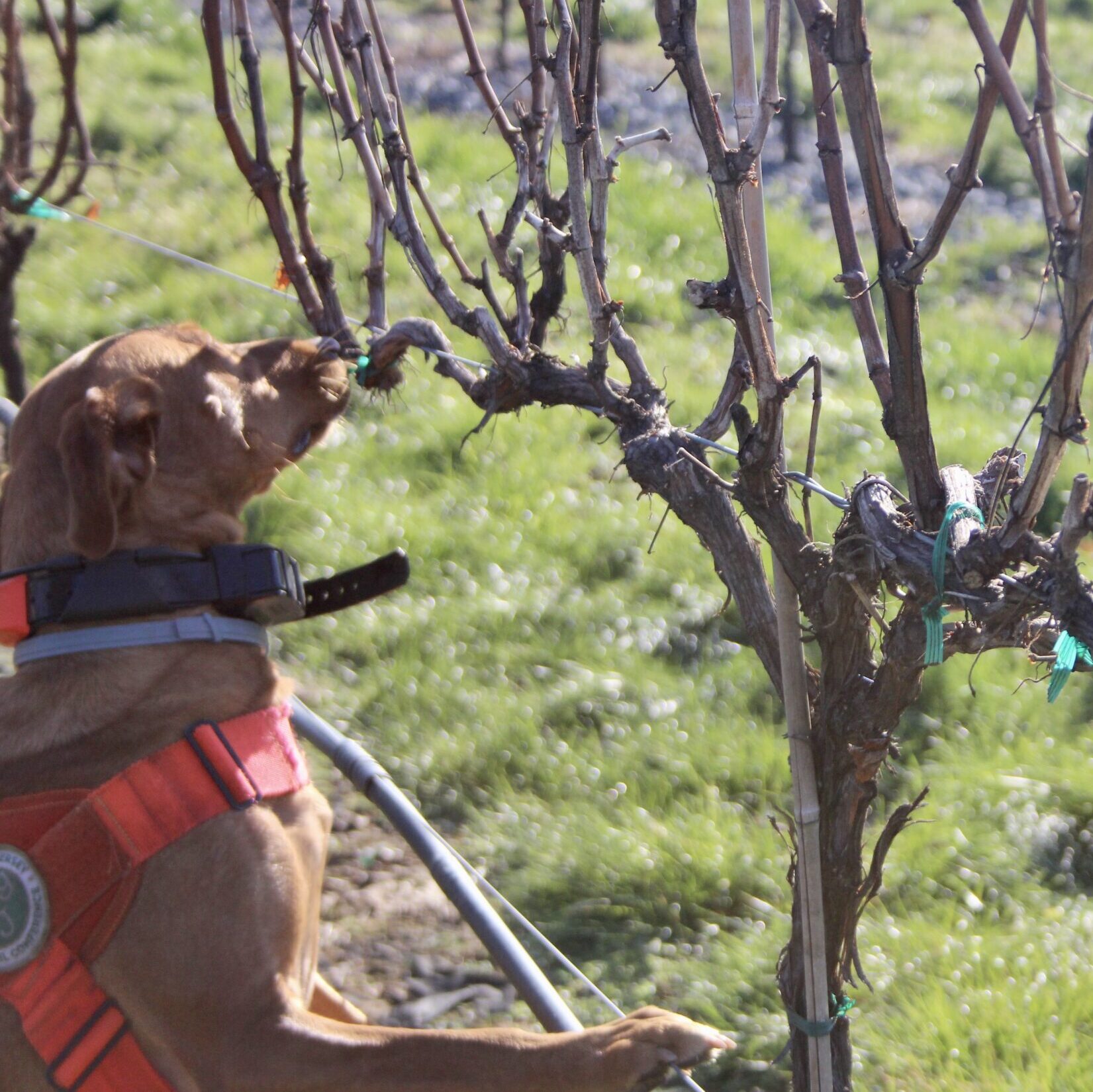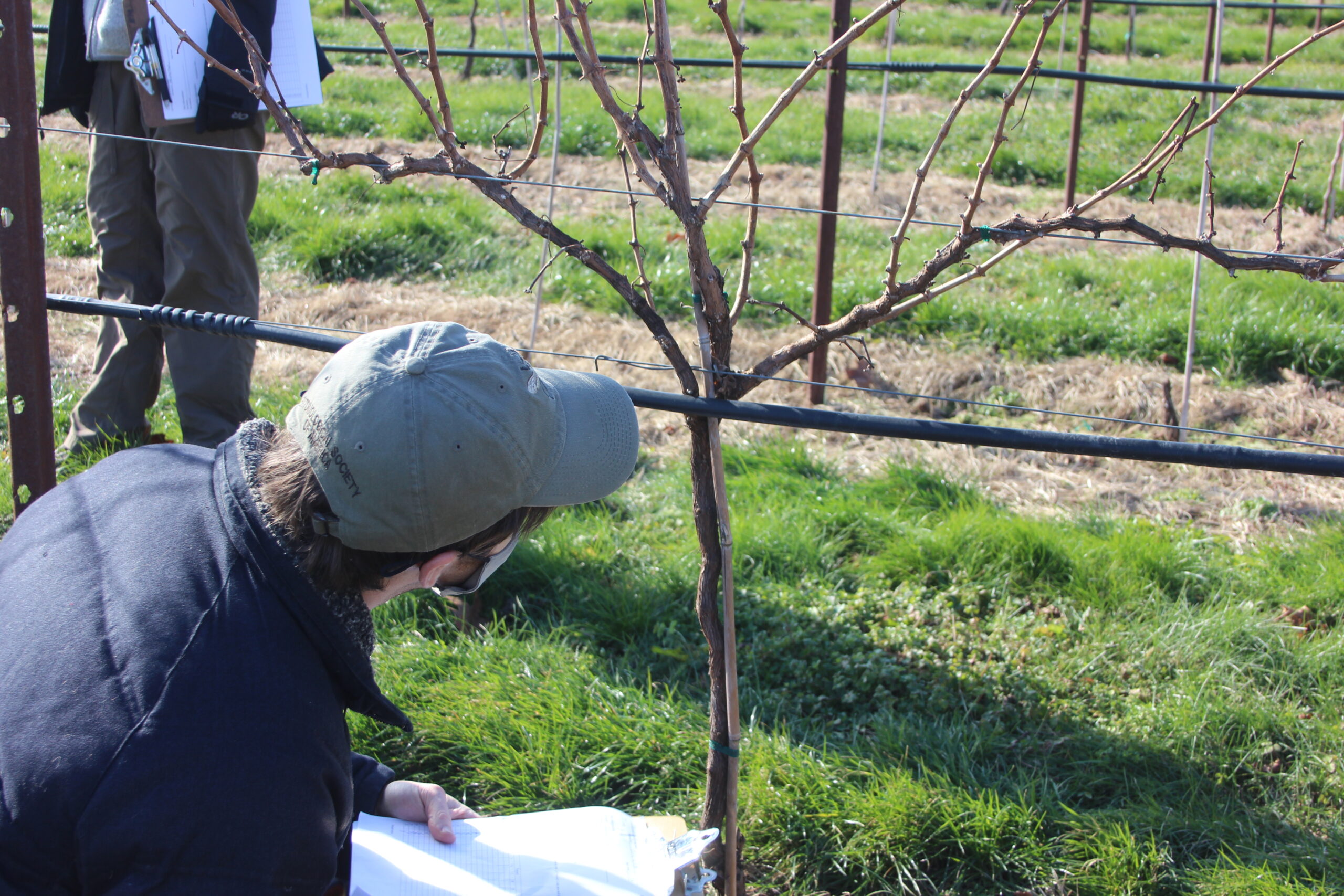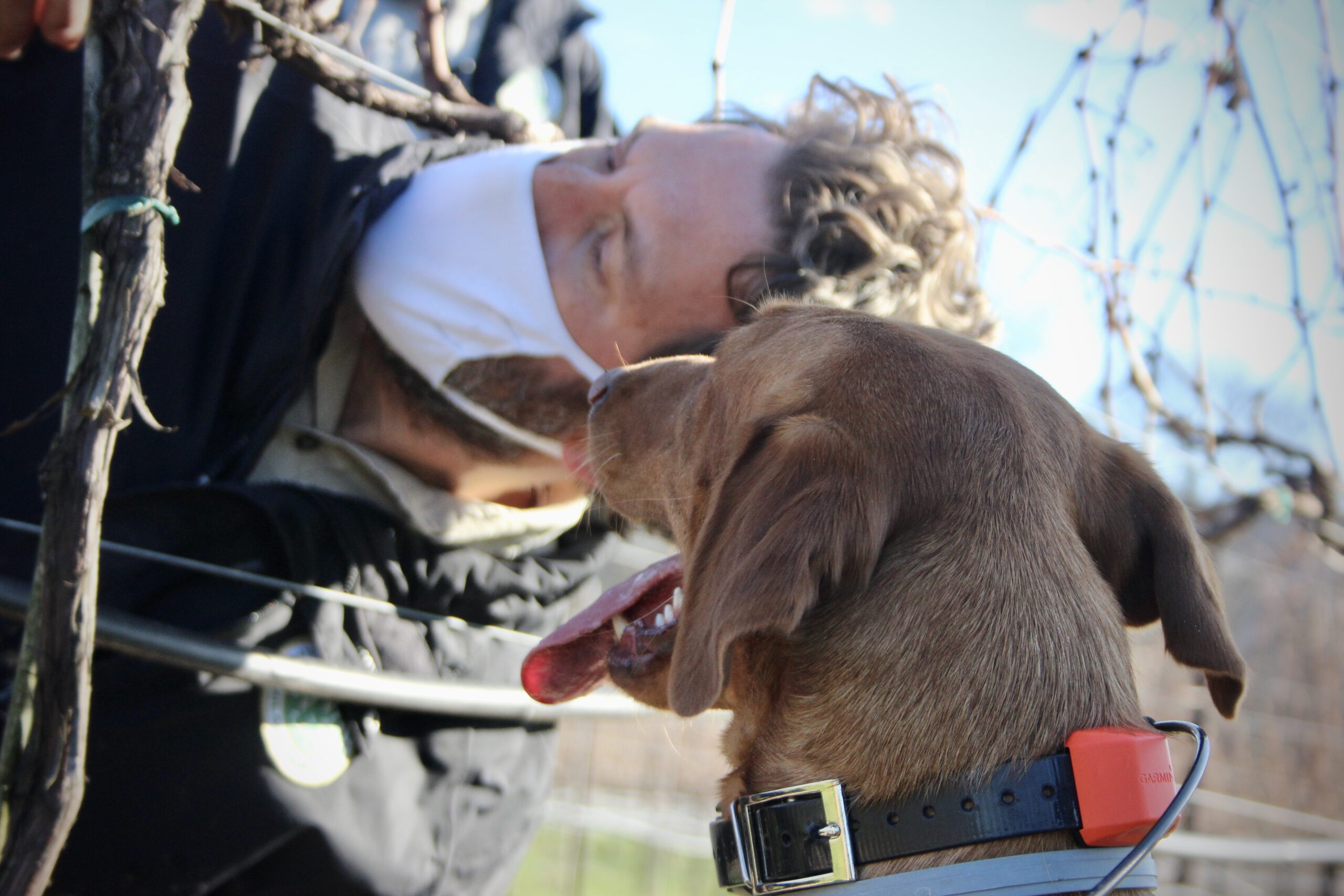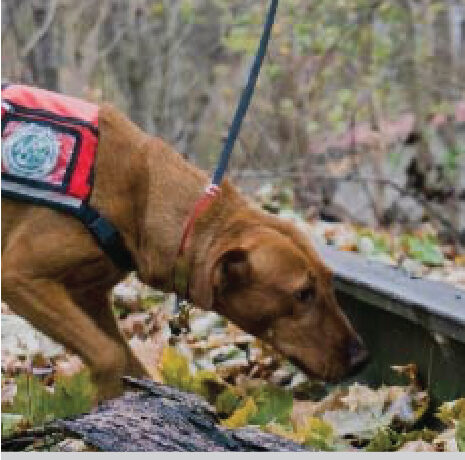NYISRI is working with partners to research Spotted Lanternfly detection with humans, and dogs.

New York Invasive Species Research Institute
Spotted Lanternfly + Detection Dogs
Sniffing and spotting the lanternflies
When spotted lanternfly (SLF, Lycorma delicatula) arrived in Pennsylvania, severe ecological and economic damage ensued– and in 2020, spotted lanternfly was detected for the first time in New York. While early detection is key to protecting both the livelihoods and ecosystems of NY, this insect’s cryptic nature can make detection at low densities difficult. With funding from Cornell’s Atkinson Center for Sustainability, a recent collaborative research effort explored the detection of spotted lanternfly in a new way: comparing the SLF-detection abilities of both human observers, and dogs.
The interdisciplinary research team and collaborators, coordinated by NYISRI, conducted surveys of 20 vineyards and adjacent natural areas for SLF-egg masses in both New Jersey and Pennsylvania. Data collected from November 2020 through April 2021 were used to build occupancy models to help estimate the probability that 1) a location is occupied by SLF, and 2) a human or canine can detect it. After comparing the efficacy of humans and detection dogs, identifying environmental factors that influence dogs’ detection abilities, and the probability of SLF egg occurrence, the team has come up with optimal search strategy recommendations for SLF. Employing these methods and monitoring for early detection of SLF can help mitigate the negative impacts of spotted lanternfly, protect the livelihoods of small agricultural producers in New York State, and provide insight applicable to invasive species detection on the whole.
While it’s not the first time detection dogs have been used to identify invasive species, this study is the first to compare SLF detection probability between dogs and humans. Working Dogs for Conservation and the NY-NJ Trail Conference Conservation Dogs Program has been training dogs to detect SLF adults and egg masses. The trained dogs currently work with NYS Parks, NYS Department of Transportation, and NYS DAM to conduct cargo searches and field surveys for spotted lanternfly. For more details on this research and the outcomes of it, check out the additional resources below.
Read our research outcomes summary here >>
Research Team:
- Carrie Brown-Lima, NYISRI Director, Cornell University
- Dr. Angela Fuller, NY Cooperative Fish & Wildlife Research Unit, Cornell University
- Dr. Ben Augustine, NY Cooperative Fish & Wildlife Research Unit, Cornell University
- Dr. Ann Hajek, Cornell University, Department of Entomology
- Dr. Eric Clifton, Cornell University, Department of Entomology
- Arden Blumenthal, NY-NJ Trail Conference
- Josh Beese, NY-NJ Trail Conference
Collaborators: - Aimee Hurt, Working Dogs for Conservation (WD4C)
- Dr. Linda Rohleder, NY-NJ Trail Conference
- Jessica Cancelliere, NYS Department of Environmental Conservation, Bureau of Invasive Species & Ecosystem Health
- Thomas Allgaier, NYS Department of Agriculture and Markets
- Karen Snover-Clift, Cornell’s Plant Disease Diagnostic Clinic
This project was supported by the Cornell Atkinson Center for a Sustainable Future’s Academic Venture Fund, a grant with the specific objective to seed original, interdisciplinary research, and serve as an incubator for the next generation of sustainable solutions.
Updates on this project, and spotted lanternfly:
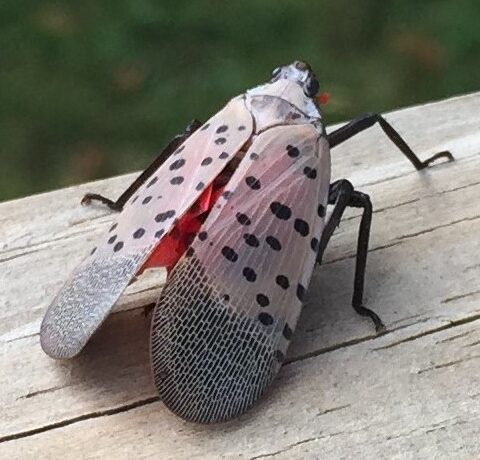
Spotted Lanternfly Found in NY
Spotted Lanternfly, an invasive insect that threatens agriculture, has been identified for the first time in New York.
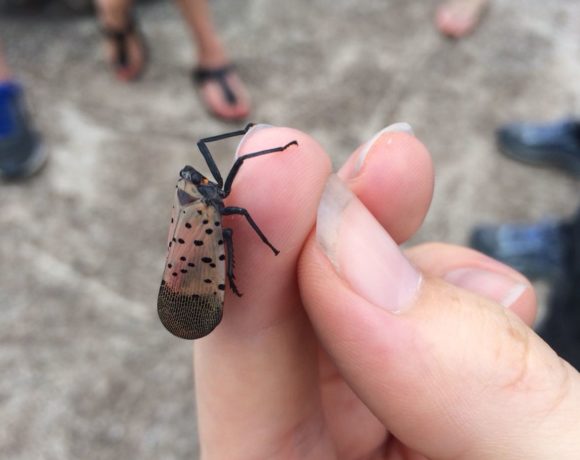
Research Summary: Dropping Like Flies
Success: a fungus can help suppress Spotted Lanternfly, invasive insect to the Northeast U.S.
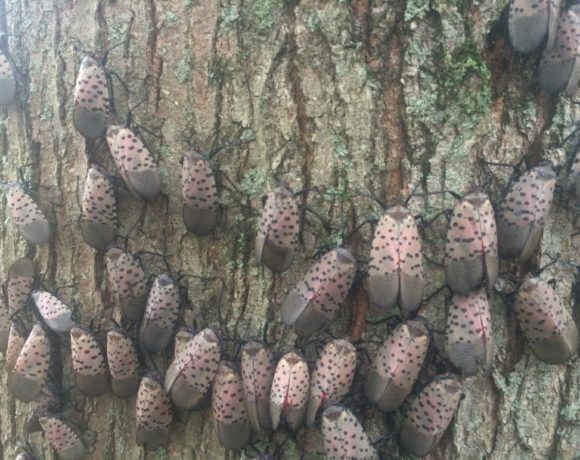
Spotted Lanternfly Detected in New York
The spotted lanternfly (Lycorma delicatula) has been detected in New York State...



